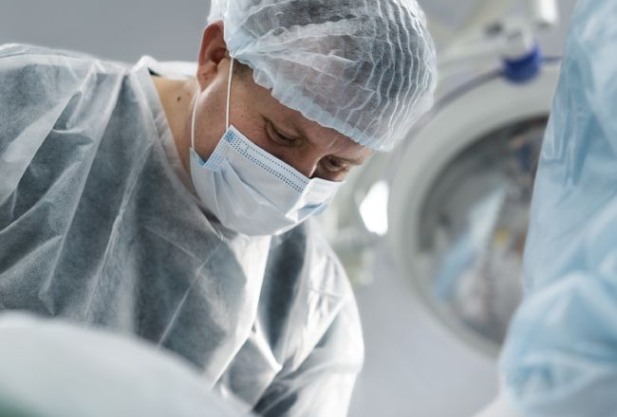Submucous inferior osteoconchotomy

specialists

equipment

treatment

Inferior osteoconchotomy of the inferior nasal conchae is performed in the presence of structural anomalies. The intervention is prescribed if a person has had breathing problems for a long time. This is especially true for chronic sinusitis, when the enlarged mucous membrane blocks the normal outflow from the nasal sinuses.
Another indication for osteoconchotomy is chronic tubootitis. This condition is characterized by inflammation of the auditory tubes. In this case, their main functions are impaired - drainage and ventilation. As a result, exudate accumulates in the tympanic cavity of the ear, which penetrates through the auditory tube. This leads to the development of inflammation of the mucous membrane of the middle ear (otitis).
Osteoconchotomy helps to improve air flow through the nasal passages. Thus, the procedure helps to normalize the drainage and ventilation functions of the auditory tube.

There are certain conditions under which such osteoconchotomy is contraindicated. These include:
- Acute infectious processes. Infection aggravates the course of inflammatory processes and increases the risk of postoperative complications
- Blood clotting problems. In this case, the risk of bleeding during and after submucosal osteoconchotomy increases
Contraindications also include chronic diseases in the acute stage. Any such pathology in the active phase worsens the general condition of the patient.
How does the operation go?
The doctor will first refer the patient for a general and biochemical blood test. Also, a hardware examination (ECG) is performed to assess kidney and liver function.
Immediately before the procedure (at least 24 hours before), the patient should avoid drinking alcohol and heavy food. This will help prevent possible complications during anesthesia and speed up the recovery process after surgery.
During the operation, only the anterior or posterior part of the nasal concha is usually removed. Laser, radio waves, or shaver-endoscopic equipment are used for this purpose. The use of modern technologies allows the surgeon to spare the patient: the intervention is not accompanied by excessive blood loss.
After completing the submucous osteoconchotomy, the specialist takes the patient out of sedation. 40 minutes later, he is allowed to leave the clinic. People with heart and vascular diseases can be monitored for 2-3 hours after surgery.

- Anesthesia For simpler cases, local anesthesia is usually used. It allows the procedure to be performed on an outpatient basis. In more complex cases, when it is combined with other surgical interventions, general anesthesia is used
- Surgical intervention During osteoconchotomy, resection (removal) of the affected areas of the nasal concha bone tissue is performed. Then the mucous membrane is returned to its place and fixed with a tampon. In some cases, additional manipulations are performed (for example, removal of polyps, cleaning of the sinuses). At this time, the anesthesiologist-resuscitator carefully monitors all vital signs of the patient's condition

Rehabilitation after surgery
The initial stage of rehabilitation after osteoconchotomy involves nasal tamponade. In this case, elastic tampons or short gauze turundas soaked in Vasilyeva's paste are used. They are removed from the nose after 24 hours.
During the postoperative period, daily anemization of the mucous membrane is carried out. It includes lubrication of the nasal passages with oil or ointment with diphenhydramine. These measures promote accelerated healing and improvement of the general condition.
During the following week, people who have undergone osteoconchotomy are advised to avoid:
- High temperatures
- Alcohol
- Spicy food
- Intense physical activity
Such restrictions help prevent the risk of bleeding. Complete tissue healing usually occurs 2-3 weeks after osteoconchotomy. At the same time, nasal breathing is restored.
To sign up for this procedure (or vasotomy) at our clinic (Moscow), fill out the application form or contact us by phone.

How is an appointment with an otolaryngologist at K+31?
Our doctors

This award is given to clinics with the highest ratings according to user ratings, a large number of requests from this site, and in the absence of critical violations.

This award is given to clinics with the highest ratings according to user ratings. It means that the place is known, loved, and definitely worth visiting.

The ProDoctors portal collected 500 thousand reviews, compiled a rating of doctors based on them and awarded the best. We are proud that our doctors are among those awarded.
Make an appointment at a convenient time on the nearest date
Price
Reviews








































What is submucous inferior osteochotomy?
Submucous inferior conchotomy is used to treat hypertrophic rhinitis. Sometimes this method is used to correct nasal deformities. During the procedure, the surgeon removes part of the bone base of one of the inferior turbinates.
The goal of the intervention is to reduce the size of the turbinate and change its position: ideally, it should be located more vertically relative to the center of the face. Thus, surgery helps to improve the appearance of the nose and facilitate breathing.
Submucous osteoconchotomy of the inferior turbinates is considered quite traumatic. Therefore, it is almost always accompanied by tamponade.